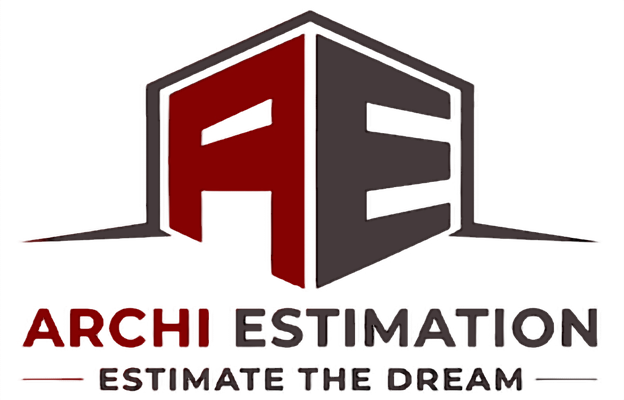Construction Cost Estimating: Ultimate Guide for Business Owners

These projects are complex, and their expenses can be difficult to predict. Construction cost estimating solutions include the cost of a construction project. It requires a systematic approach that takes into account multiple factors, including labor, materials, equipment, permits, and more. Without the right tools and methods, having construction cost estimates can be a daunting task. This is where this article comes in.
In this guide, we will break down the step-by-step process of construction cost estimates.
The Importance of Accurate Estimating
When it comes to construction projects, accurate estimating is critical. Both owners and contractors rely on cost estimates to get a project from pre-construction through completion. Without an initial knowledge of the costs involved with a project, investors would be unable to determine whether or not it was feasible within the budgeted amount. In order to alter expenses, design/scope modifications may be required after a preliminary estimate.
Contractors also rely on correct predictions in order to prepare competitive and successful bids. Overestimating actual building costs might result in a contractor submitting an offer that is too high for selection; even when there’s bargaining over pricing, construction estimates must still be precise if you want to maintain a balance between owner budgets and contractors’ profits.
Step 1: Define the Scope of the Project
The first step in having construction cost estimates is to define the scope of the project. This includes identifying the location, size, and type of construction project you want to undertake. You should also consider any special requirements, construction cost estimating services, or constraints that may impact the project’s cost, such as zoning laws or the availability of materials. Once you have a clear idea of the project’s scope, you can start to gather data on the materials, labor, and other resources you’ll need.
Step 2: Collect Data on Materials and Labor Costs
The next step in construction cost estimation is to gather data on the costs of materials and labor. This can be done in several ways, including researching local suppliers and comparing their prices and using cost estimation software. Labor costs can vary widely depending on the project’s complexity, location, and the skill and experience of the workers involved. Accurate data on construction costs is crucial for developing precise estimates. Utilizing construction cost estimating services ensures reliable information for accurate estimates.
Step 3: Prepare a Detailed Construction Cost Estimates
With the data you have collected, the next step is to prepare a detailed cost estimate. This should include a breakdown of all the costs associated with the project, including materials, labor, equipment, permits, and other expenses. It’s essential to ensure that your estimate is as accurate as possible. So be sure to double-check your calculations and account for any unforeseen expenses.
Step 4: Update Your Estimate Over Time
Construction projects are dynamic, and costs can fluctuate over time. Therefore, it’s crucial to update your estimate regularly to account for changing circumstances. This includes things like fluctuations in material prices, unexpected delays, or changes in the project’s scope. Regularly updating your construction cost estimates and having construction cost estimating services can avoid cost overruns.
Step 5: Use Analysis to Optimize Your Costs
Once you have a detailed estimate, you can use analysis to optimize your costs further. This includes identifying areas where you can save money without compromising on quality. For example, you can reduce labor costs by using more efficient construction methods. Or choosing less expensive materials that still meet the project’s requirements. By constantly analyzing your estimate , you can keep your construction projects within budget and achieve better results.
Types of Estimates
Estimators may not only generate construction estimates for bidding. Depending on where it’s employed in the project lifecycle, various sorts of estimates have varied purposes. An early estimate provide a developer with an idea of how much something will cost before any work starts.
Estimating can be divided into five degrees of specificity, according to the American Society of Professional Estimators (ASPE).
| Level | Name | Description |
| 1 | Order of magnitude | Based on data from similar previous projects, this estimate gives a rough idea of potential costs. |
| 2 | Schematic design | Usually, cost-per-square-foot calculations is done for existing buildings that have similar scope and finishes. |
| 3 | Design development | Estimators use a preliminary design, along with itemized lists of materials and quantities, to provide a rough estimate for the project. |
| 4 | Construction documents | Estimators use an almost completed design to establish a practical budget for a project. |
| 5 | Bid estimate | Contractors utilize bid documents to prepare an estimate of the cost at which they can complete the project. |
When talking about construction cost estimating services, most contractors are referring to a bid estimate. It’s a detailed assessment of the costs associated with a specific project after a finished design.
Conclusion:
Construction cost estimation is a critical process that can make or break a construction project’s success. By following the step-by-step guide we’ve provided, you can ensure that your construction cost estimates are accurate, comprehensive, and up-to-date. By using the latest tools and methods, you can optimize your costs and achieve better results. This guide provides you with all the information you need to succeed in your construction projects. Reach out to us today to get accurate estimates.
